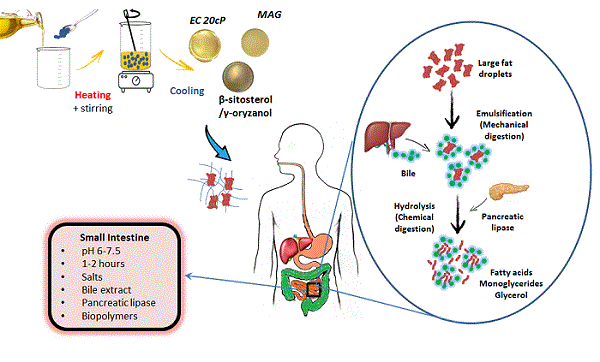The potential of oleogels as an alternative oil structuring technique has been identified and investigated intensively with different gelator-edible oil systems. Oleogelators, can be grouped into two groups: low-molecular weight oil gelator (LMOGs) and high-molecular weight oil gelators (HMOGs). The first group describes the self-assembly of small molecules into crystal platelets which further aggregate to form a three-dimensional network. The second category is based on HMOGs such as polymers and proteins. Polymers can form a gel network either via direct dispersion of the structurant in oil, or through a templating procedure to facilitate oil absorption.
The objective of this research is to investigate the relation between the oleogel formulation, stability, and mechanical properties to its functionality. More specifically the research will focus on determining the correlation between the gelation mechanism, oleogel stability and mechanical properties to the gel digestibility.

- Areen Ashkar, Jasmine Rosen-Kligvasser, Uri Lesmes, and Maya Davidovich-Pinhas “Controlling lipid intestinal digestibility using various oil structuring mechanisms” Food and Function, 11, 7495-7508 (2020).
- Areen Ashkar, Sharon Laufer, Jasmine Rosen-Kligvasser, Uri Lesmes and Maya Davidovich-Pinhas “Impact of different oil gelators and oleogelation mechanisms on digestive lipolysis of canola oil oleogels” Food hydrocolloids, 97, 105218 (2019).